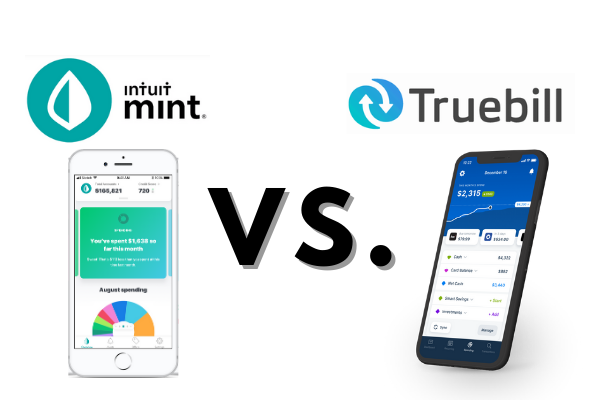04 September, 2020
Which App, Mint Or Truebill Will Save Your Finances The Most

Managing your money is a must in today’s economy. When multiple credit cards are at play, it can seem like an even more complicated affair, but it doesn’t have to be.
Tracking your expenses in Excel or Google Sheets is a thing of the past with all of the personal finance apps available. There are so many available to download, but it turns out that most of them are about as primitive and confusing as Excel.
We wanted to look at the top two: Truebill and Mint. Both on the brink of becoming household names, they connect you with your banks, so you can see and manage all of your income streams, bills, and finances in one place.
They’re both popular options, but keep reading to find out which is the best and why.
Key Similarities
- Both track your income and purchases on multiple bank accounts
- Both are available as an app for iOS and Android users
- Both have a clean user interface with appealing graphics
- Both offer free credit scores and reports
- Both are free to download
Key Differences
- For security, they both use bank-level 256-bit SSL encryption, but Truebill uses Plaid, the same software used by Venmo, while Mint uses VeriSign and two-factor authentication
- Mint focuses primarily on budgeting and tracking your expenses, while Truebill boasts many other useful features in addition to budgeting
- Truebill shows you all the subscriptions you pay for, and allows you to cancel right from the app
- Truebill offers bill negotiation
- Users report that Mint has trouble connecting to smaller, local banks
Truebill Overview
Truebill’s key differentiation from Mint is that it not only reveals all your spending habits, but actively helps you make changes.
It’s free to download, but when you upgrade to the paid plan (under $5/mo.), you can delete subscriptions with the click of a button. The app is also incredibly skilled at separating your real subscriptions (i.e. Netflix) from your monthly bills. Unlike competitors, it’s really easy and that’s all it takes.
They also offer bill negotiation services as a built-in fee to the savings you’d get. If you think you’re paying too much for your phone, they will negotiate your payments at no cost to you. If they find you savings, you’d only pay them 40% of the savings.
We didn’t feel it was enough for a key difference, but Truebill’s graphics and interface are slightly nicer; it’s a little more intuitive than Mint and the most approachable financial app we’ve ever seen.
Mint Overview
Mint is perhaps the more well-known of the two apps, probably because it’s been around since 2006. We’re also a fan of the catchy name.
Focusing on budgeting, Mint allows you to sync your different bank accounts, track your spending habits, and more.
If you want to generate a report in the app, it will be downloaded as an Excel file, so you can’t completely cut ties with the monster if that’s your goal.
Users also report issues with smaller banks not updating, uninformed customer service representatives, and new purchases being mislabeled as they come in (like a daycare payment being noted as shopping).
Mint offers advising services and credit reports with their paid version.
Final Notes
Overall, these are both excellent apps for increasing your financial proficiency! They’re both modern, easy steps to taking control of your finances.
However, Truebill has a larger range of services, especially with the premium version, and according to users, a much better experience.
Although Mint has been known as a key player, the app still has hiccups, like not connecting to smaller banks, and a smaller range of capabilities.
It can show you how you can spend less, but Truebill will take the action so you actually spend smart.
You could download both and see for yourself, but we think Truebill’s cancellation services, bill negotiation, and intuitive design make it the better app.
Managing finances can be hard. Truebill makes it easy.Follow this link to sign-up for Truebill.
We share the best in finance tips, products and services that help you manage your money.